Our latest post is written by one of our newest MA students, Kevin Lee. We’re happy to have him helping out with the project and it sounds like he has an amazing time digging every summer!
You’ve heard of the famous Banditaccia necropolis at Cerveteri no doubt. You know, rows and rows of Etruscan tombs and tumuli about 40 minutes northwest of Rome? A veritable city of the dead? Home of the friendliest stray dog and worst hamburger in the Repubblica italiana?
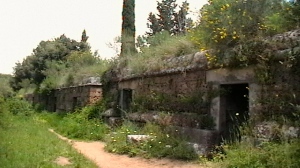 No? Well, humor me anyway. Suppose you wanted to visit this fabled land where the Etruscans of ancient Cerveteri laid their dead to rest and left them some goodies to enjoy in the afterlife until two millennia later when archaeologists so thoughtfully came in and jacked it all. Imagine yourself in Rome’s Trastevere station (I choose that one instead of Termini because I’ve noticed Termini inspires very…mixed feelings, let us say, among those who have experienced its unique charms). If you hop an FL5 train towards Civitavecchia and ride it out for about 20 minutes, you’ll arrive at a station called Marina di Cerveteri. You disembark, and find yourself in a whitewashed resort town that has no intention of leaving the ‘70s, and realize this is not where you want to be. So you follow the locals to the nearest intersection and catch that friendly-looking municipal bus which has enough legroom for people approximately 1 micron in width and ride it up the hill to Piazza Aldo Moro. Ah, now you’re in Cerveteri itself, with that stately medieval castle of the Ruspoli clan to your left and the outdoor café to your right where the elders of the town seem to be practicing their age-old art of staring directly through you. A pleasant walk around the medieval borgo and along the Via della Necropoli, lined with enough stone pines to make Virgil’s shade wax poetic, and within half an hour you’ve arrived at the Banditaccia’s gate.
No? Well, humor me anyway. Suppose you wanted to visit this fabled land where the Etruscans of ancient Cerveteri laid their dead to rest and left them some goodies to enjoy in the afterlife until two millennia later when archaeologists so thoughtfully came in and jacked it all. Imagine yourself in Rome’s Trastevere station (I choose that one instead of Termini because I’ve noticed Termini inspires very…mixed feelings, let us say, among those who have experienced its unique charms). If you hop an FL5 train towards Civitavecchia and ride it out for about 20 minutes, you’ll arrive at a station called Marina di Cerveteri. You disembark, and find yourself in a whitewashed resort town that has no intention of leaving the ‘70s, and realize this is not where you want to be. So you follow the locals to the nearest intersection and catch that friendly-looking municipal bus which has enough legroom for people approximately 1 micron in width and ride it up the hill to Piazza Aldo Moro. Ah, now you’re in Cerveteri itself, with that stately medieval castle of the Ruspoli clan to your left and the outdoor café to your right where the elders of the town seem to be practicing their age-old art of staring directly through you. A pleasant walk around the medieval borgo and along the Via della Necropoli, lined with enough stone pines to make Virgil’s shade wax poetic, and within half an hour you’ve arrived at the Banditaccia’s gate.
Or you could just take a car or go with a tour group, but that would just be too easy, wouldn’t it?
 If you’re lucky a huge white and well-fed Great Pyrenees will lop up to you at the gate, tongue lolling out, and roll over begging for pets on a stomach caked with approximately 5 years’ worth of unwashed dirt. Inside you’ll walk among and through an array of tombs so varied and whimsical you’ll expect a purple-suited Gene Wilder to pop out of the Mengarelli Tumulus and start singing “Come with me, and you’ll be, in a worlllld of pure imagination.” Within moments you too will fall in love with (or at least be fascinated by…or slightly interested in) the Etruscans, and as you sit at the visitor center eating a dry hamburger whose thickness could have been used by Demokritos to demonstrate his concept of the atom, you’ll ponder this ancient people whom romantic writers like George Dennis and D.H. Lawrence liltingly lionized as peaceful, nature-loving hill-elf folk before those nasty Romans came with their laws and sewer systems.
If you’re lucky a huge white and well-fed Great Pyrenees will lop up to you at the gate, tongue lolling out, and roll over begging for pets on a stomach caked with approximately 5 years’ worth of unwashed dirt. Inside you’ll walk among and through an array of tombs so varied and whimsical you’ll expect a purple-suited Gene Wilder to pop out of the Mengarelli Tumulus and start singing “Come with me, and you’ll be, in a worlllld of pure imagination.” Within moments you too will fall in love with (or at least be fascinated by…or slightly interested in) the Etruscans, and as you sit at the visitor center eating a dry hamburger whose thickness could have been used by Demokritos to demonstrate his concept of the atom, you’ll ponder this ancient people whom romantic writers like George Dennis and D.H. Lawrence liltingly lionized as peaceful, nature-loving hill-elf folk before those nasty Romans came with their laws and sewer systems.
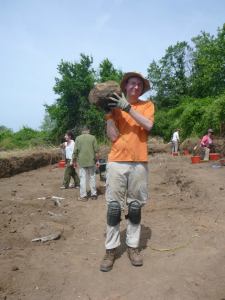 These are the people I’ve dug for the past three summers. While my interest as broadly conceived is comparative urbanism across the ancient Near East and Mediterranean, my practical focus has been on digging Etruscans and Etruscan accessories. Contrary to the notions of Dennis and Lawrence, the Etruscans were not Na’vi antici, but as Livy will be happy to tell you perfectly predisposed to some good old-fashioned cattle-rustlin’ in Roman territory, wars, and to becoming kings who made the Romans build those impressive sewers (the gall!). They also weren’t particularly nature-loving in the modern sense. On my first dig in 2012 at Poggio Civitate, the site of an Etruscan manor house in northern Etruria approximately 20 kilometers from Siena, our director, Dr. Anthony Tuck, would point to all the surrounding hills and note the relatively scrubby growth, saying “That’s in part because the Etruscans who owned this hill clear-cut the whole area to fuel their workshop.” That ought to make James Cameron think he didn’t evil-up his cartoonishly villainous space miners enough. Whereas they left intact large swaths of alien jungle in spite of their futuristic earth-movers and giant Tonka trucks, their 2,000+ year-old ancestors far outstripped them with little more than iron axes. And using nothing more than those axes and their grit, the southern cousins of the Poggio Civitate lords cleared the defensible Cerveteri plateau and established one of the major cities of the ancient Mediterranean atop it.
These are the people I’ve dug for the past three summers. While my interest as broadly conceived is comparative urbanism across the ancient Near East and Mediterranean, my practical focus has been on digging Etruscans and Etruscan accessories. Contrary to the notions of Dennis and Lawrence, the Etruscans were not Na’vi antici, but as Livy will be happy to tell you perfectly predisposed to some good old-fashioned cattle-rustlin’ in Roman territory, wars, and to becoming kings who made the Romans build those impressive sewers (the gall!). They also weren’t particularly nature-loving in the modern sense. On my first dig in 2012 at Poggio Civitate, the site of an Etruscan manor house in northern Etruria approximately 20 kilometers from Siena, our director, Dr. Anthony Tuck, would point to all the surrounding hills and note the relatively scrubby growth, saying “That’s in part because the Etruscans who owned this hill clear-cut the whole area to fuel their workshop.” That ought to make James Cameron think he didn’t evil-up his cartoonishly villainous space miners enough. Whereas they left intact large swaths of alien jungle in spite of their futuristic earth-movers and giant Tonka trucks, their 2,000+ year-old ancestors far outstripped them with little more than iron axes. And using nothing more than those axes and their grit, the southern cousins of the Poggio Civitate lords cleared the defensible Cerveteri plateau and established one of the major cities of the ancient Mediterranean atop it.
While the Etruscans had a multitude of names for this city (e.g., Kaisra, Cisra, Kysry, etc.) the Romans knew it as Caere, and that is the name that has stuck. Up until recently, the focus in Etruscan archaeology has been their tombs, as those were the big remains which captured the attention of earlier investigators. Little overall was known about their settlements and cities, which, being made largely of perishable materials such as wood and mudbrick, were not as sexy to early researchers as those decorated tombs a short walk away. Recently the winds have been shifting in favor of more Etruscan settlement archaeology, and the Caere Project is part of that wave. I have dug there for the past two seasons, in 2013 and 2014. The excavation is held near the approximate geographic center of the ancient city, in close proximity to the Roman theater built during the reign of Claudius as well as a large elliptical structure of uncertain status (council chamber? Ritual hub?) and two large Etruscan sanctuaries tentatively identified as being dedicated to Uni (Juno) and Cel (Tellus).
While today the area the Caere Project excavates is beneath a former vineyard, in the Etruscan and Roman periods it was home to a subterranean ritual space termed “the Hypogeum of Clepsina” by the project, after an inscription to the left of the entrance mentioning renovations during the tenure of the praefect Gaius Genucius Clepsina in 273 B.C. Interestingly, just because the hypogeum was subterranean does not mean it was a room without a view. Excavations in 2012 revealed windows that looked out onto a great lustral basin. Based on calculations made by the project director, Dr. Fabio Colivicchi, the hypogeum is aligned so that on the Winter Solstice, the Sun directly illuminates the a niche, where an altar or other ritual fixture may have once stood, flanked by painted palm trees. Furthermore, echoes during the excavation process suggested the presence of more subterranean spaces beneath the hypogeum.
 As exciting as it would be to excavate an underground complex, the paperwork and expense for such an undertaking is massive, so our Indiana Jonesing must wait and for the past two years the project has focused on the easier task of excavating the urban fabric surrounding the hypogeum. In 2013 we dug the area south of the hypogeum, which contained a major road used during the Roman and Etruscan periods, on both sides of which were remains that suggest mixed domestic-production areas. A small subterranean room with a pillar altar as well as a 6 meter-deep cistern and well were found on the south side, while a structure containing fragments of bronze and a corner pool (forge?) was found north of the road. In 2014, we excavated a smaller and more concentrated area directly north of the hypogeum. In spite of the plowing damage from early modern vine trenches and the modern town’s aqueduct pipe which blew right through the middle of our trench, we uncovered several structural remains, including a drain, a platform of some sort, and, most intriguingly, a c. 8th century B.C. hut, the oldest evidence to date of habitation on the plateau. Unfortunately I did not get to investigate the hut, as my area was the very messy zone of mixed contexts (and thus relatively useless for analysis), the product of industrious plowing by the site’s medieval and early modern occupants.
As exciting as it would be to excavate an underground complex, the paperwork and expense for such an undertaking is massive, so our Indiana Jonesing must wait and for the past two years the project has focused on the easier task of excavating the urban fabric surrounding the hypogeum. In 2013 we dug the area south of the hypogeum, which contained a major road used during the Roman and Etruscan periods, on both sides of which were remains that suggest mixed domestic-production areas. A small subterranean room with a pillar altar as well as a 6 meter-deep cistern and well were found on the south side, while a structure containing fragments of bronze and a corner pool (forge?) was found north of the road. In 2014, we excavated a smaller and more concentrated area directly north of the hypogeum. In spite of the plowing damage from early modern vine trenches and the modern town’s aqueduct pipe which blew right through the middle of our trench, we uncovered several structural remains, including a drain, a platform of some sort, and, most intriguingly, a c. 8th century B.C. hut, the oldest evidence to date of habitation on the plateau. Unfortunately I did not get to investigate the hut, as my area was the very messy zone of mixed contexts (and thus relatively useless for analysis), the product of industrious plowing by the site’s medieval and early modern occupants.
The site has produced some fantastic finds for learning about the urban context of a southern Etruscan city: painted terra cottas, a wealth of pottery, utilitarian and otherwise, and votive heads, to name a few categories. The spread is also interesting to note. In the southern area excavated in 2013, most of the finds could be dated to the Roman period. In the northern area excavated in 2014, most of the finds could be dated to the earlier Etruscan period. We know that Caere’s fortunes waxed and waned over time. After the city was subsumed into the Roman Republic it lost much of its prestige, but remained an urban center into the Julio-Claudian dynasty when Claudius gave special attentions to the city as a historic center of Etruscan culture. The city gradually withered afterwards, although some ritual activity at least persisted at the site during the Severan dynasty, as an inscription in the hypogeum suggests. These areas are not very far apart, so it is interesting that the finds from one are predominantly Roman and those from the other predominantly Etruscan. Since the finds are of a different age, this demonstrates changing site usage through time.
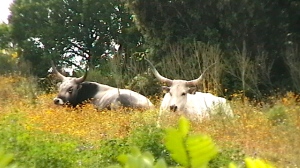 Thus stands the Caere Project. It is set to continue for the foreseeable future. While yours truly will not be returning there this summer, having already signed on to another dig, the project’s progress can be followed at its website.
Thus stands the Caere Project. It is set to continue for the foreseeable future. While yours truly will not be returning there this summer, having already signed on to another dig, the project’s progress can be followed at its website.

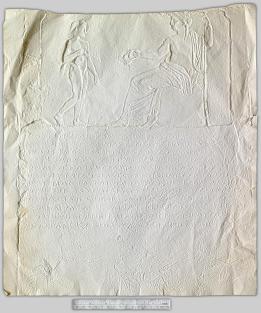 We have a very extensive squeeze collection here at From Stone to Screen. 1051 squeezes, to be exact – although about 200-300 of them are duplicates. The point of this entire project has been to digitize the squeezes, which we have diligently been doing, and to put them up on an online database. This hits a snag sometimes when we can’t identify where exactly the squeeze is from. Such as last Friday when Lisa came across this gorgeous squeeze while she was working at the Digital Initiatives lab.
We have a very extensive squeeze collection here at From Stone to Screen. 1051 squeezes, to be exact – although about 200-300 of them are duplicates. The point of this entire project has been to digitize the squeezes, which we have diligently been doing, and to put them up on an online database. This hits a snag sometimes when we can’t identify where exactly the squeeze is from. Such as last Friday when Lisa came across this gorgeous squeeze while she was working at the Digital Initiatives lab.
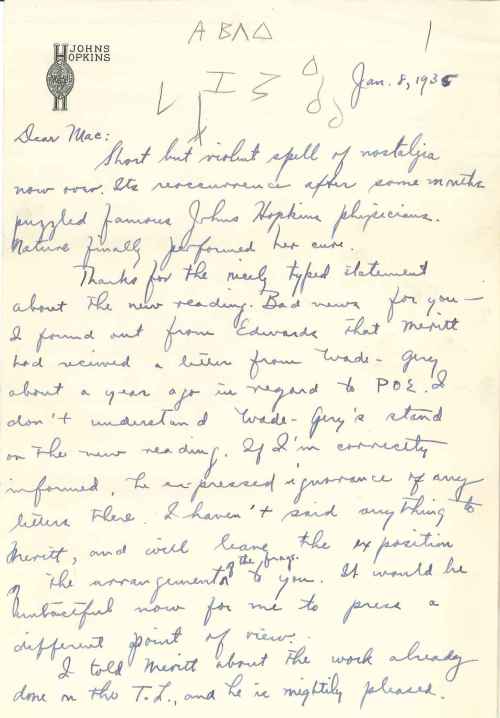
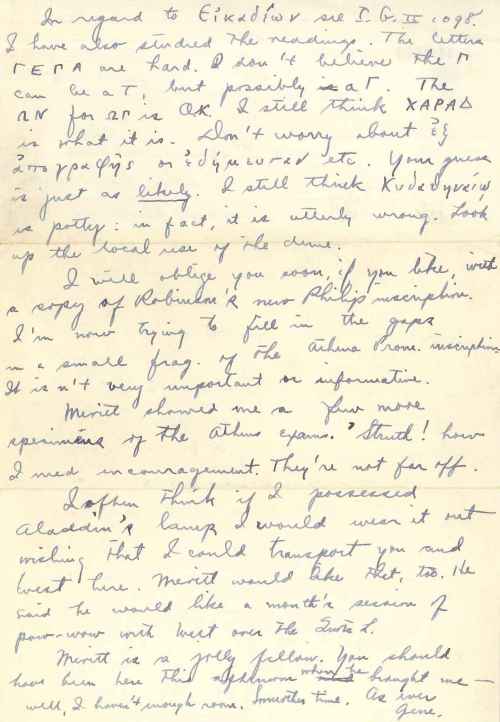
 No? Well, humor me anyway. Suppose you wanted to visit this fabled land where the Etruscans of ancient Cerveteri laid their dead to rest and left them some goodies to enjoy in the afterlife until two millennia later when archaeologists so thoughtfully came in and jacked it all. Imagine yourself in Rome’s Trastevere station (I choose that one instead of Termini because I’ve noticed Termini inspires very…mixed feelings, let us say, among those who have experienced its unique charms). If you hop an FL5 train towards Civitavecchia and ride it out for about 20 minutes, you’ll arrive at a station called Marina di Cerveteri. You disembark, and find yourself in a whitewashed resort town that has no intention of leaving the ‘70s, and realize this is not where you want to be. So you follow the locals to the nearest intersection and catch that friendly-looking municipal bus which has enough legroom for people approximately 1 micron in width and ride it up the hill to Piazza Aldo Moro. Ah, now you’re in Cerveteri itself, with that stately medieval castle of the Ruspoli clan to your left and the outdoor café to your right where the elders of the town seem to be practicing their age-old art of staring directly through you. A pleasant walk around the medieval borgo and along the Via della Necropoli, lined with enough stone pines to make Virgil’s shade wax poetic, and within half an hour you’ve arrived at the Banditaccia’s gate.
No? Well, humor me anyway. Suppose you wanted to visit this fabled land where the Etruscans of ancient Cerveteri laid their dead to rest and left them some goodies to enjoy in the afterlife until two millennia later when archaeologists so thoughtfully came in and jacked it all. Imagine yourself in Rome’s Trastevere station (I choose that one instead of Termini because I’ve noticed Termini inspires very…mixed feelings, let us say, among those who have experienced its unique charms). If you hop an FL5 train towards Civitavecchia and ride it out for about 20 minutes, you’ll arrive at a station called Marina di Cerveteri. You disembark, and find yourself in a whitewashed resort town that has no intention of leaving the ‘70s, and realize this is not where you want to be. So you follow the locals to the nearest intersection and catch that friendly-looking municipal bus which has enough legroom for people approximately 1 micron in width and ride it up the hill to Piazza Aldo Moro. Ah, now you’re in Cerveteri itself, with that stately medieval castle of the Ruspoli clan to your left and the outdoor café to your right where the elders of the town seem to be practicing their age-old art of staring directly through you. A pleasant walk around the medieval borgo and along the Via della Necropoli, lined with enough stone pines to make Virgil’s shade wax poetic, and within half an hour you’ve arrived at the Banditaccia’s gate.


 Thus stands the Caere Project. It is set to continue for the foreseeable future. While yours truly will not be returning there this summer, having already signed on to another dig, the project’s progress can be followed at its
Thus stands the Caere Project. It is set to continue for the foreseeable future. While yours truly will not be returning there this summer, having already signed on to another dig, the project’s progress can be followed at its 

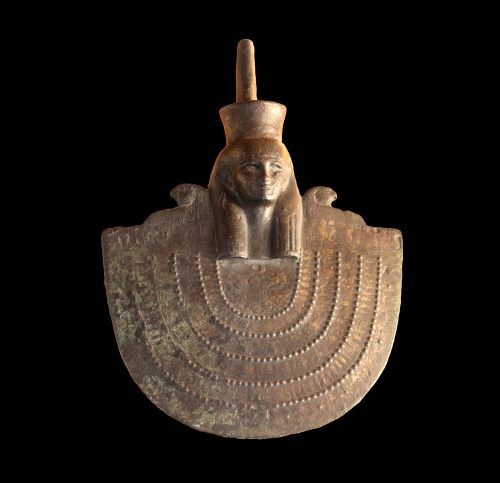
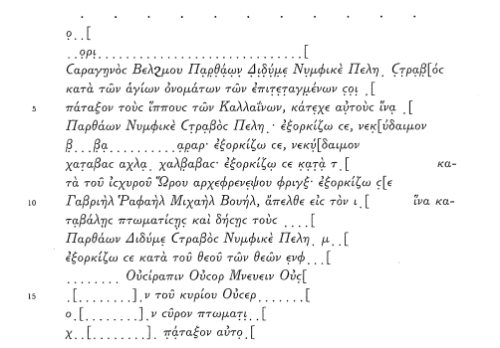



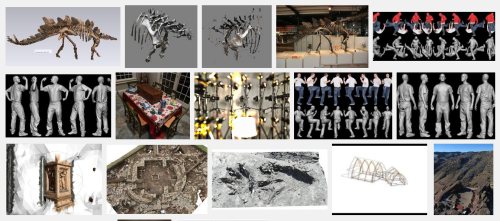

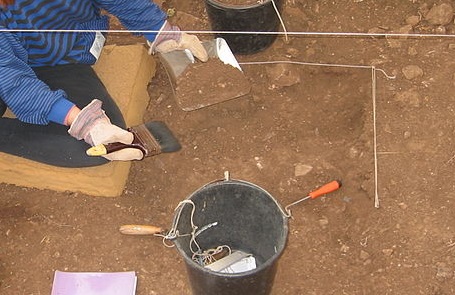

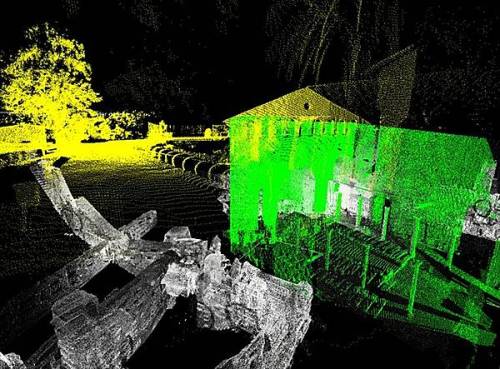

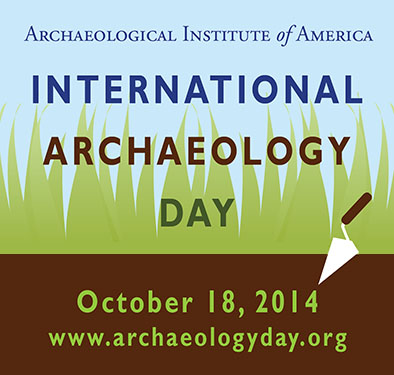
 The
The 
